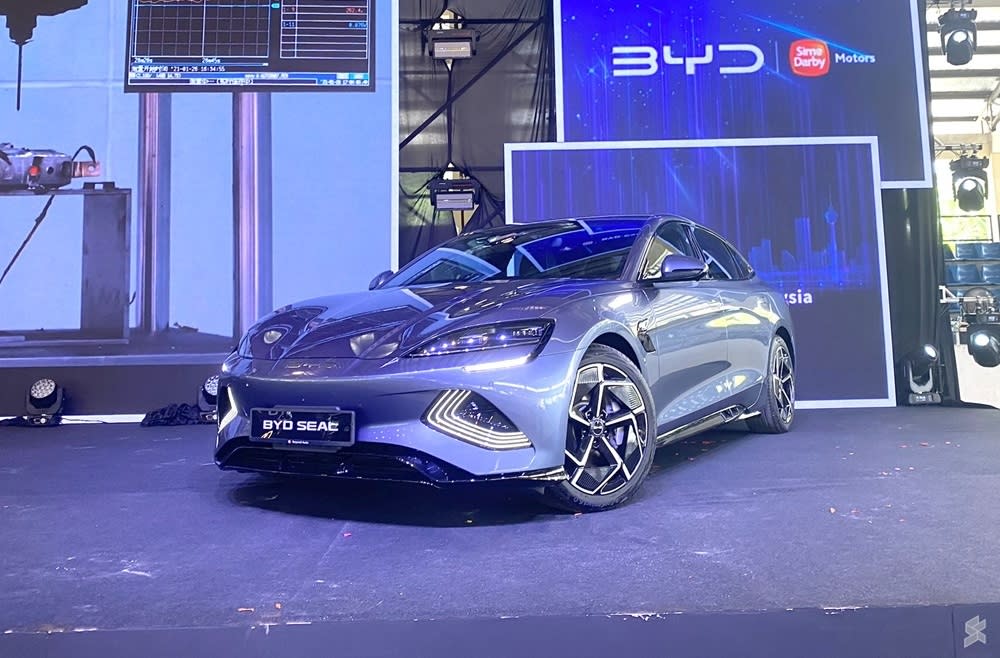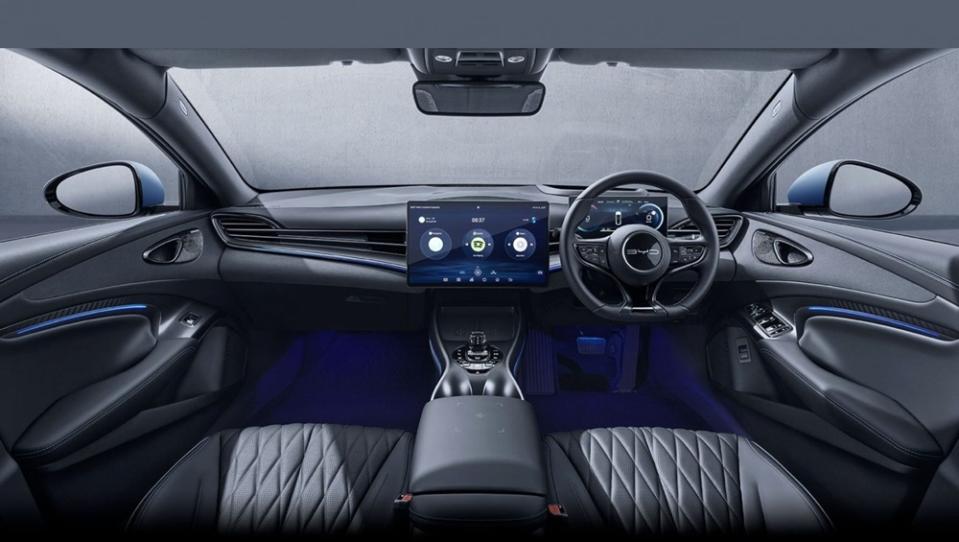BYD Seal Malaysia: Tesla Model 3 rival previewed ahead of official launch

KUALA LUMPUR, Dec 9 — BYD Malaysia has provided an early preview of the upcoming BYD Seal ahead of its official launch that’s set to happen early next year. The BYD Seal is the Chinese carmaker’s fully electric sedan that competes directly with the Tesla Model 3.
If you want to check out the BYD Seal, it is on display at BYD Malaysia’s 1st Anniversary Event held at Bukit Kiara Indoor Arena this weekend. It is open to the public from December 9 to 10, 2023 between 9am to 6pm.
During the 1st anniversary event, BYD is offering extra rebates and freebies for customers who book their current EVs such as the BYD Dolphin and the Atto 3.
Expected BYD Seal Malaysia pricing and availability
The BYD Seal is the brand’s 3rd EV model for the global market and it is expected to launch in Malaysia as early as January 2024. This electric sedan has already made its debut in several right-hand-drive (RHD) markets including Singapore, Thailand, Australia and New Zealand.
From what we’ve been told, the BYD Seal is expected to be priced around the RM200,000 region in Malaysia. That puts it around the same price territory as the Tesla Model 3 and the Smart #1. Since this is a sedan, the Tesla Model 3 which starts from RM189,000 will be its direct rival.
If BYD wants to disrupt the market, we reckon the base RWD model with a smaller battery should be priced at around RM170,000-RM190,000. The Seal will be positioned above its BYD Atto 3 SUV, which is priced at RM168,630 for the extended-range version.
Based on the BYD Seal release in other markets, there will be a total of three variants. The base BYD Seal Dynamic gets a single motor on the rear pushing 150kW (201hp) and 310Nm of torque and it comes with a 61.44kWh battery. It has a 0-100km/h time of 7.5 seconds and a WLTP-rated range of 460km on a single charge.
Next, the BYD Seal Premium is also an RWD model but it gets a more powerful motor with 230kW (308hp) and 360Nm torque, and a bigger 82.56kWh battery. It gets from 0-100km/h quicker at 5.9 seconds and has a longer WLTP-rated range of 570km on a single charge.
If you need more performance, the BYD Seal Performance is an AWD model with twin motors pushing a combined 390kW (523hp) and 670Nm of torque. It does the century sprint in just 3.8 seconds and the same 82.56kWh battery is listed to deliver a WLTP-rated range of 520km on a single charge. Whichever variant you choose, the Seal gets a speed-limited top speed of 180km/h.

BYD Seal Interior. — SoyaCincau pic
In terms of charging, the base model with a 61.44kWh battery supports 110kW DC fast charging. Meanwhile, the Premium and Performance models with the bigger battery, support up to 150kW DC fast charging. According to BYD, the Seal takes 32 minutes to charge from 30-80 per cent on DC.
Based on the specs in Singapore, the BYD Seal disappointingly only offers a single-phase 7kW AC on-board charger (OBC) across the board. It takes nearly 9 hours to fully charge the BYD Seal Dynamic and a staggering 15.2 hours for the higher Premium and Performance variants.
Since there are options for 11kW triple-phase AC charging in select markets, we hope Sime Darby Motors considers ticking that option for the Malaysian market. At the very least, 11kW AC charging should be included for the range-topping performance model.
Tesla Model 3 or BYD Seal?
In terms of design alone, the BYD Seal looks more exciting than the Model 3 as it features more character lines and design elements. On top of that, the Seal still provides a more practical interior as it retains physical controls for key driving functions and there’s even a head-up display (HUD) for the higher-spec variants.
While the newly upgraded Tesla Model 3 offers a very bare and minimalistic design, it deniably offers more range and performance for your money. Teslas also stands out for having a well-thought-out ecosystem which includes its app and Tesla Supercharger network. Since Tesla is selling its EVs directly to consumers, you don’t get the same extensive dealer network and sales advisor experience that you typically get from traditional carmakers. That also means regardless of where you are in Malaysia, you’ll have to pick up the car yourself from its designated delivery centre in Cyberjaya.
If you’re thinking of getting a fully electric EV sedan, would you go for the Tesla Model 3 or wait for the BYD Seal? — SoyaCincau



